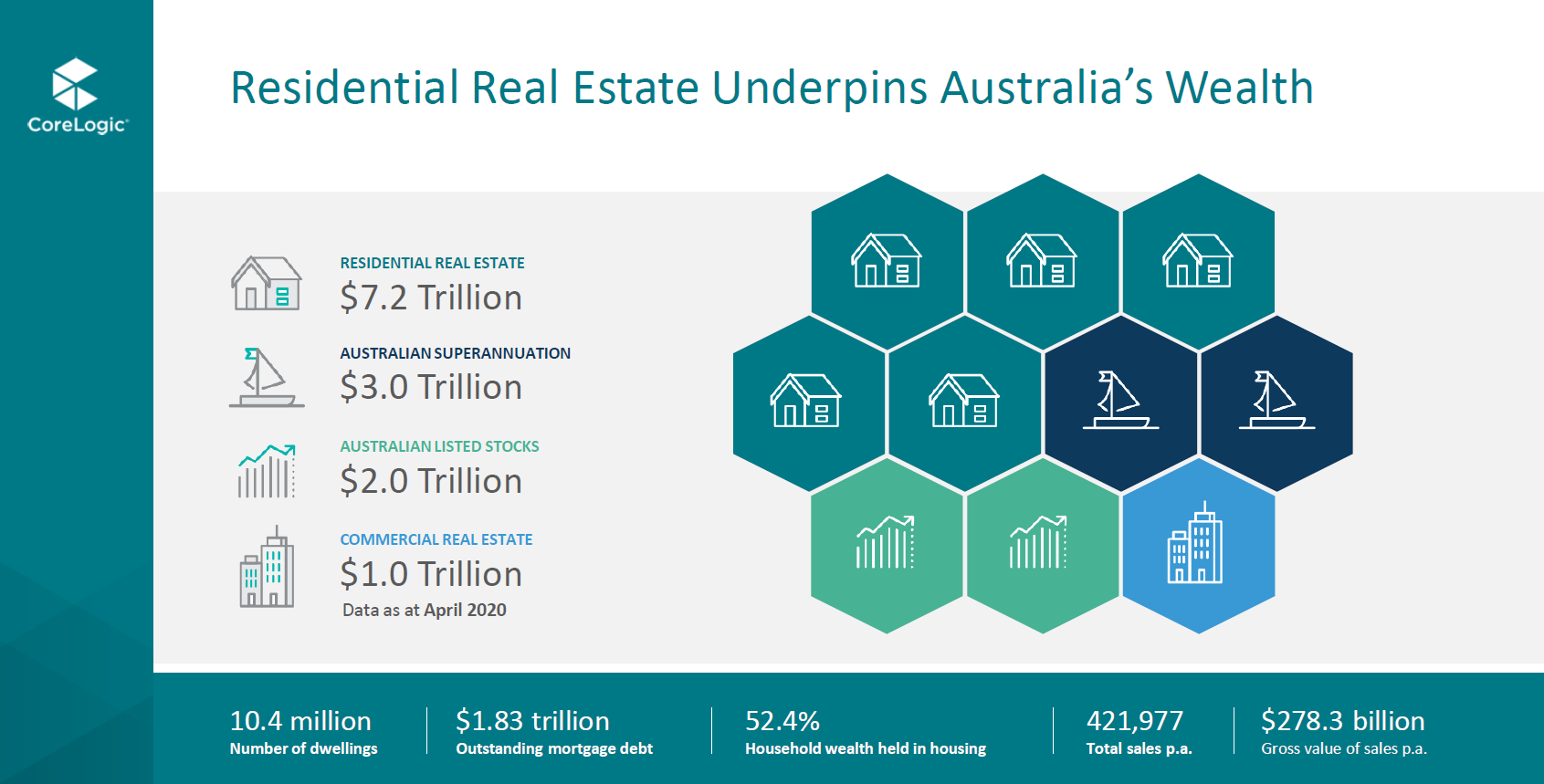Australian Residential Housing Market Report May 2020
Growth in national dwelling values slipped to 2.1% in the 3 months to April, down from a recent peak of 4.0% at the December 2019 quarter.
Annual growth rates understate the recent slowdown in momentum, but point to an improving market before the onset of COVID 19.
Looking at the monthly change in different value tiers of the market, it is clear that the high end of the Melbourne market has begun leading the downturn.
Each of the capital city markets were well into an upswing before the onset of COVID 19, with the exception of Hobart, which was starting to lose momentum after a long upswing.
The CoreLogic daily home value index showed a change of pace halfway through March. Data to early May shows the combined capital cities market at the cusp of value declines.
Quarterly and annual change in dwelling values for Sydney, Melbourne, Queensland, Perth, Adelaide, ACT, Hobart, and Darwin.
CoreLogic estimates that settled sales fell by about 40% over the month of April, dragging down the annual change in sales.
Sales volumes are declining significantly as consumer confidence reaches its lowest levels since the early 90’s recession.
COVID19 has interrupted the recovery in an already weak rental market. Annual growth in rents almost halved in April to 0.8%.
Nationally, gross rental yields fell a further 2 basis points over April, to 3.72%. As declines in rent outpace value declines, yields are likely to compress further.
Already some rental markets have seen a significant uplift in rent listings off the back of falling demand, and increased supply, amid COVID 19.
Days on market was lower over the year to April 2020, though this may steady as housing demand eases.
By April, all markets saw an annual decline in vendor discounting. But as the market turns, vendor discounts are likely to become larger.
At the 28 days ending 3rd of May, new listings had fallen to levels lower than the lead up to last Christmas.
Total listings are also at the lowest level in years. This may explain why values have shown relative stability.
Greater capital city and rest of state regions have seen an average annual decline in total listings of 25.3%.
Clearance rates have been skewed lower by a surge in withdrawn auctions.
However, recent data shows fewer auctions are being scheduled. This has lowered the withdrawal rate and lifted the clearance rate from recent lows.
Trend data indicates that dwelling approvals were starting to rise, following declines from the end of 2017.
In the lead up to COVID 19, aspects of lending conditions eased slightly, but the financial system remains strong.
New home lending fell 1.7% in February 2020. The relatively low portion of investor participation provides some insulation for housing from a retreat of investors as a result of the current downswing.
Before the onset of COVID19, first home buyer participation as a portion of owner-occupiers was at its highest since January 2012.
Over February, investor participation continued to decline in most states and territories.
Average owner-occupier mortgage rates came down 25 basis points over the month of March, while average investor rates fell 26 basis points.
Source: Corelogic





